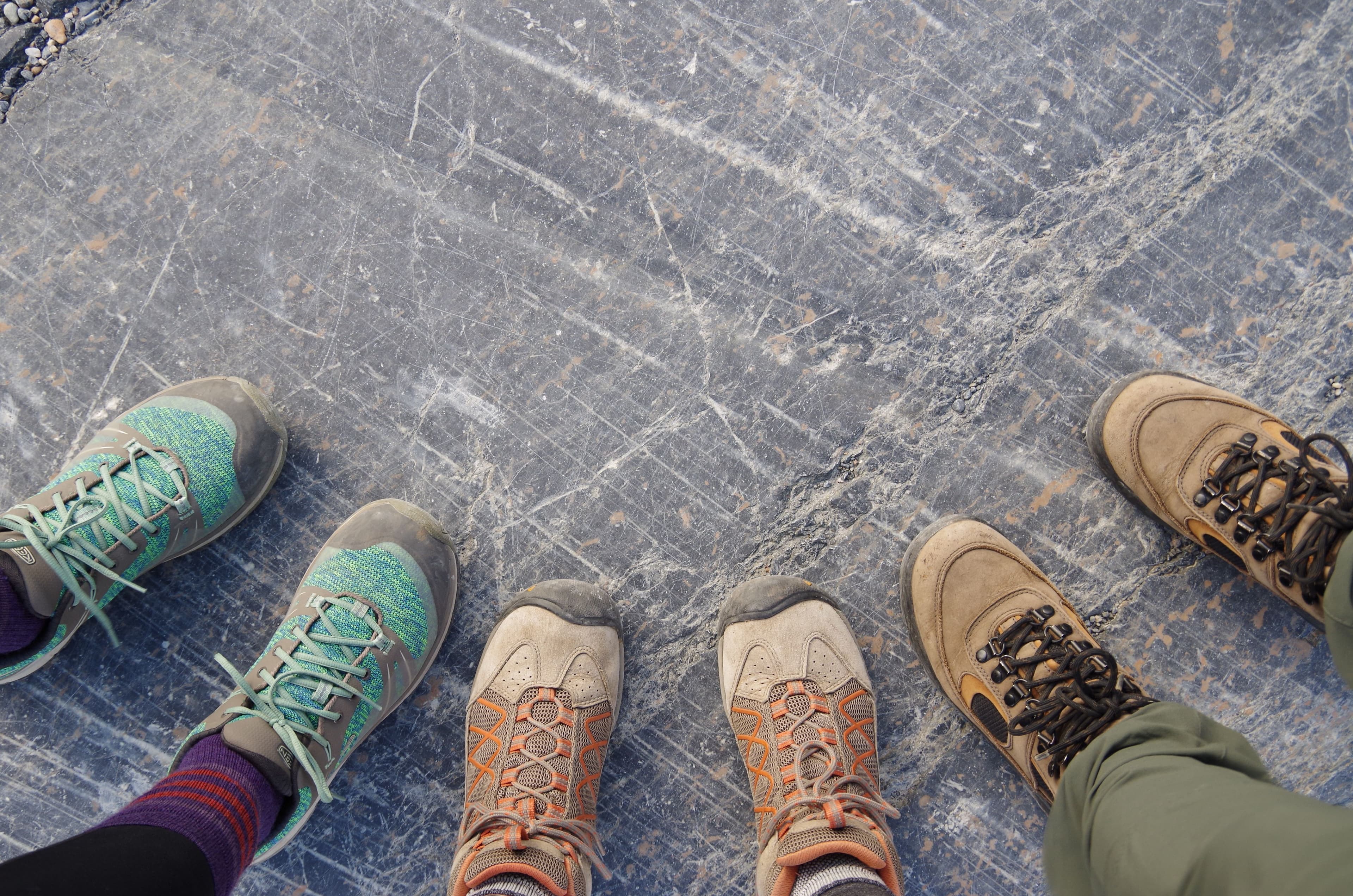1. How would you define 'circular design', what role does it play in achieving sustainability and environmental goals within the footwear and accessories design industry?
Circular design was born as a response to linear design, whereby the concept of “end of life” is replaced by other alternatives within a circular economy (CE) context, seeking an efficient use of resources through strategies such as refuse, reduce, reuse, repair, refurbish, remanufacture, re-purpose, recycle materials, recover energy and re-mine.
The role of the designer is to identify challenges within their context and propose solutions. Today, our context is climate change, decreased resource availability, and global instability. All of these lead to a need for a new design paradigm. Therefore, achieving environmental and sustainability goals is a design necessity, and the footwear and accessories industry is very much concerned.
2. What are prevailing practices in footwear and accessories design concerning sustainability and regeneration?
In terms of materials, specifically soles, the industry is focusing on the manufacture of soles from secondary raw materials (recycled materials). Regarding the upper , the focus is on materials from secondary raw materials, as well as leather alternatives such as bio-leather made from bio-based or plant-based materials. In the case of recycled materials, a great deal of research is currently being carried out into the chemical recycling of polymers. The reason is that mechanical recycling, currently the most widely used in the textile, clothing, and footwear (TCF) industry, is of the downcycling type, meaning that it produces materials of lower quality than the original material. This means that the resulting material has to be mixed with virgin material to offer the same quality.
Additionally, in terms of adhesives, the trend is to move towards water-based solvents. In terms of materials validation, material certifications are being standardized. One example is the community Leather Working Group, which certifies higher-quality leather, as well as processes that are less harmful to people and the environment.
The demand for footwear continues to gradually increase, resulting in a huge amount of post-consumer (end-of-life) footwear waste that is disposed of in landfills around the world. Mechanical footwear recycling plants are currently emerging, some of them still in the pilot phase. Although such recycling plants have existed for textiles for some time, for footwear the recycling process is even more complicated, as each shoe model can be made up of up to 70 different parts and/ or materials, which makes it difficult or almost impossible to recycle. With the revaluation of this waste, the problem of raw materials shortages and dependence on external resources can be minimized.
As for 3D printing in footwear, what started a few years ago as an innovative buzz, now has become established in several footwear companies as a localized prototyping tool with which, in addition, no waste is generated. It is now slowly but surely becoming a strong trend towards production creation. The flexibility, precision, and localization of 3D printing production make it a promising tool, although, for the moment, not so much on an economic level, as the price of these final products is currently higher in comparison to traditional production methods. Properly treated to be adaptable to printers, there are 3D printing filaments created with waste suitable for the manufacture of footwear. In all, 3D printing is a zero-waste technique, as it is an additive printing system that does not generate waste.
)](/_next/image?url=https%3A%2F%2Fstorage.googleapis.com%2Ftocco-cms%2F3_D_printing_production_6a7c1d9eb0%2F3_D_printing_production_6a7c1d9eb0.jpeg&w=2048&q=75)
3. How does circular design redefine or influence the development and progression of new footwear products?
About the selection of materials, it is important to have nearby suppliers, reject the use of virgin materials in favor of secondary materials (recycled materials), and eliminate hazardous toxic products (such as chromium hexavalent in leather, formaldehyde and halogenated organic compounds in textile). It is also important to reduce the number of materials used in the product or to use mono-materials to facilitate the recycling of the product at the end of its useful life.
In terms of design, it is recommended to opt for efficient processes. There are CAD/CAM systems for footwear, using the design is made in 3D and the pattern is generated in 2D. The pattern can be printed directly on paper and the design can be printed in 3D to check the dimensions and/or design lines of the printed prototype in-house. In this way, times are sped up, it is not necessary to send samples and no waste is generated during the prototyping phase. On the other hand, it is important to reject programmed obsolescence from the design phase.
In terms of footwear production, localized production and ensuring good working conditions are basic. The use of IoT (Internet of Things) technology makes it possible to obtain information on the traceability of products and have a more transparent and cleaner production. Reuse materials by reusing products as a whole or just some of their parts. Having better cutting systems that optimize the use of the material, so that as little waste as possible is generated, is also a viable solution.
In terms of the distribution phase, optimizing transport and distribution or becoming carbon neutral, e.g. by switching to renewable fuel and energy sources. As for the use phase, opt for quality materials and offer repair services to extend the life of the model.
After reusing, repairing, refurbishing, remanufacturing, and re-purposing, there is the option of recycling, which tries to transform used materials into others of equal (recycling), higher (upcycling) or lower (downcycling) quality.
When developing projects, I usually follow these same steps within the nature of the project. The key is to consciously design each phase, looking for the alternative with the least impact.
4. What are your recommendations for footwear brands who want to adopt circular design?
Joint Research Centre estimated that over 80% of all product-related environmental impacts are determined during the design phase of a product. Ecodesign, unlike conventional design, involves taking into account all the impacts of the product from its inception to the end of its useful life. The tangible benefits are many and, in the case of disadvantages, none.
At the design stage, companies can positively influence the environment instead of harming it. By linear product categories, the demand for raw materials decreases, resulting in material savings, which will also reduce the costs of these raw materials.
As for the use phase, the lifetime of the footwear is extended. Furthermore, reconditioning and repair add value to an original product, as its quality and functionality are as good or even better than those of a new one. Through reconditioning and repair, prevents recycling, incineration or landfilling of products and materials, is avoided, thus the amount of waste generated.
By recycling footwear at the end of its useful life, the consumption of virgin raw materials, the use of arable land, and the consumption of fossil raw materials are reduced by revaluing the waste. CO2 emissions are reduced as the processing of recycled materials generally requires less energy than producing new materials. The amount of waste incinerated is reduced while employment opportunities in innovation are created.
)](/_next/image?url=https%3A%2F%2Fstorage.googleapis.com%2Ftocco-cms%2Fproduct_related_environmental_impact_4432ea03cc%2Fproduct_related_environmental_impact_4432ea03cc.jpeg&w=2048&q=75)
5. What are some of the primary obstacles you think brands will face in integrating circular or regenerative design into their products?
The circumstances in which we live have been forcing us, for some years now, to move from a linear economy to a circular economy, and consumer demand also pushing us to do so. Despite this, there are still many companies that have not yet understood these new challenges that we are facing, but which they will also have to face, as Europe is legislating for it. For example, in Spain, the new Waste Law establishes, for the year 2025, the obligatory collection of waste from the textile industry.
6. How do you advise brands to integrate circular design principles into their design process, ensuring scalability and commercial feasibility in the long term?
Many companies, because of their size or revenues, are unable to meet these challenges, so collaboration between like-minded companies is essential. Connected systems increase transparency, technology transfer, organizational learning, and relationships for cleaner technology and efficient use of resources. This means that the different actors in a value chain work together to reduce, slow down, and close the loop.
 establishes, for the year 2025, the obligatory collection of waste from the textile industry. (Photo source: [Unsplash](https://unsplash.com/it/foto/sneaker-nike-marron-sur-textile-jaune-NOpsC3nWTzY))](/_next/image?url=https%3A%2F%2Fstorage.googleapis.com%2Ftocco-cms%2Fwaste_law_3c0adf81bb%2Fwaste_law_3c0adf81bb.jpeg&w=2048&q=75)
7. Looking forward, what are some emerging trends or innovations in circular design that you find promising for the future of footwear design?
Circular design cannot be understood without the development of new technologies, research, and innovation. In recent years, the footwear industry has focused on research into new materials and structures, as well as improving their performance and new functionalities of their finishes. The current trend maintains the same focus, but ensures that the new technologies of the future have no negative impact on either people or the environment.
The decrease in the availability of resources, the increase in waste from the footwear industry and the new regulations imposed are directing research towards the efficiency of mechanical recycling processes to obtain an effective separation of the different materials that make it up.
Industry 4.0 and the Internet of Things (IoT) are driving the footwear industry to improve environmental efficiency through technological development. An example of this is the implementation of footwear design software capable of calculating in real-time the carbon footprint of each model at each stage of its life cycle, to help make better design decisions.
Meanwhile, the incorporation of artificial intelligence in design departments is transforming the industry. AI gives designers control to guide the tool and generate ideas and new concepts according to their instructions and under their constraints.








